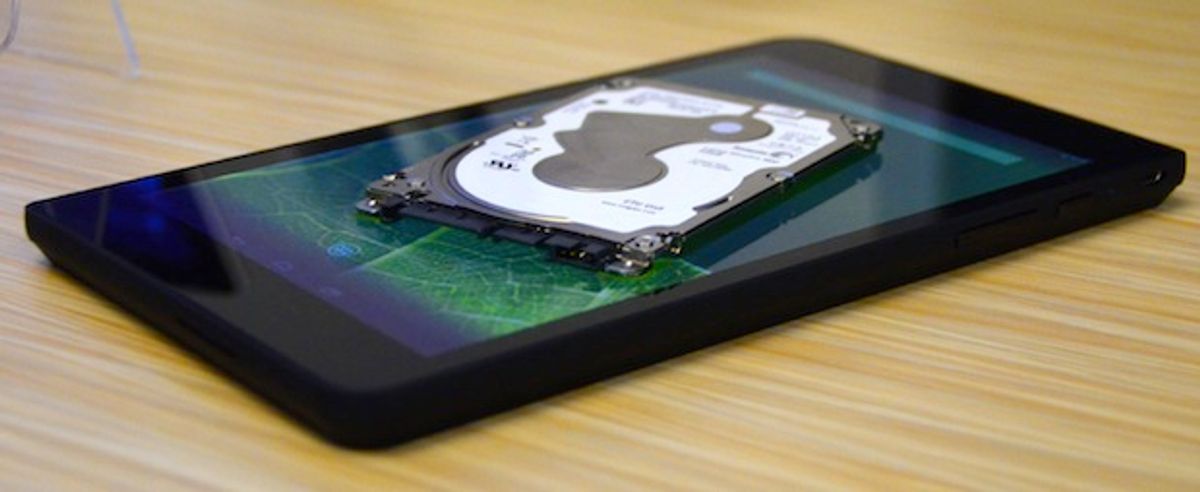Flash memory is fantastic stuff. It's small, it's fast, and it's robust. It's also absurdly expensive if you want a lot of it, which is at odds with our evolving media-hungry mobile lifestyle. Google, Apple, and Amazon would like us to store everything in the cloud. But hard disk drive manufactures have other ideas.
For a few years now, Seagate has offered wireless traditional hard drives to give mobile devices a storage boost, but at CES this year, they're showing off a prototype tablet that skips the peripheral completely. And somehow, it does so without many compromises.
Seagate doesn't have a name for this prototype tablet, and they don't intend to jump into the tablet game. It's more of a design concept, intended to illustrate the feasibility of stuffing an old-school magnetic platter hard drive into a slim tablet.
The hard drive in question is Seagate's impressively skinny "Ultra Mobile HDD," a five-millimeter-thick single system with 500GB of storage, robust power management, and drop protection. It's cheap, too: Seagate won't tell us how much, exactly, except that it's "a fraction of the cost" of even just 64GB of flash memory.
Of course there's plenty of reasons we don't already have hard drives in tablets. The compromise that immediately leaps to mind when you add a spinning hard drive is, of course, battery life. Seagate's solution in this prototype was to hybridize the storage with the addition of 8GB of flash memory. The vast majority of the time, the tablet is just running on flash, and the magnetic drive is powered off. If you want to play a movie, though, the drive will spin up, swap the movie onto the flash memory through a fast 6 gb/s SATA interface, and then spin down again. The upshot of this is that you have 500GB that you can access whenever you want, but you're not paying for it in battery life, because it's almost never running.
With battery life rendered a non-issue, putting a drive like this into a tablet is almost entirely upside. You get a lot more storage, of course, and you also save a lot of money. According to Seagate, there's "no compromise" in battery life, robustness, or performance: you just get more storage for less money, and that's it. Hopefully, a manufacturer will take the plunge on this, and give us a consumer model to play with at some point in the near future.
Also: Fast, Portable Storage
The other interesting thing that Seagate had on display is something that you can buy, right now. It's called Backup Plus Fast, and it's a chubby 2.5" external USB 3.0 hard drive. It's chubby (the picture above shows it next to a regular sized external HD) because there are actually two drives in there, set up in a striped (RAID 0) configuration. You get a staggering four terabytes of bus-powered storage that can maximize its USB 3.0 connection with transfer speeds of up to 220 MB/s, great for working with video or piles of pictures.
While the drive is currently only available in RAID 0, Seagate told us that they're looking at whether they'll put out a RAID 1 (mirrored) version at some point in the future. Personally, I'm super paranoid about irreplaceable media like pictures and videos, and I'd love to have a portable solution that offers protection against drive failure, even if it means sacrificing the capacity and speed.
The Seagate Backup Plus Fast is available now for a penny under $300.
[ Seagate ]
For more from CES, check out our complete coverage.
Evan Ackerman is a senior editor at IEEE Spectrum. Since 2007, he has written over 6,000 articles on robotics and technology. He has a degree in Martian geology and is excellent at playing bagpipes.





